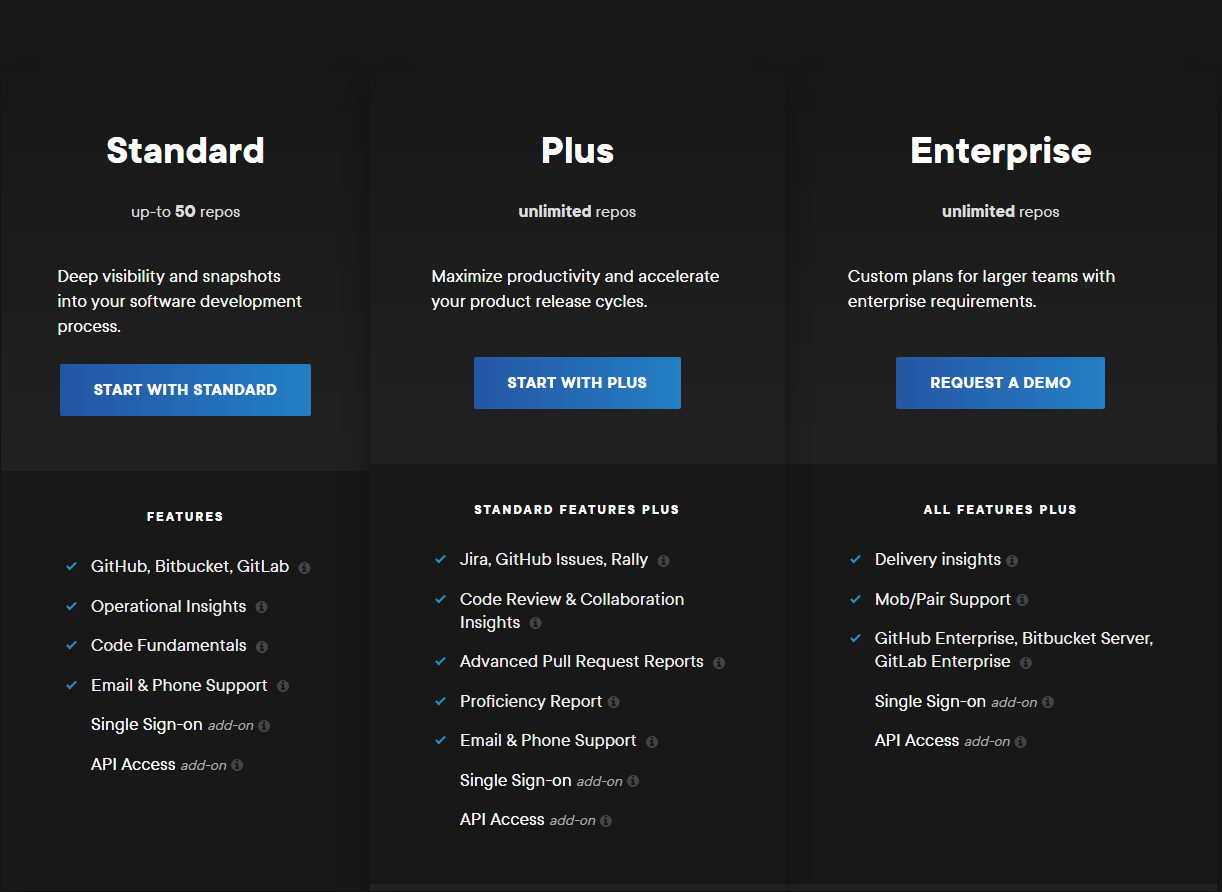The Pluralsight pricing section is effective for several reasons:
1. Clear Hierarchy and Visual Appeal:
- Tiered Structure: “Standard,” “Plus,” and “Enterprise” tiers are clearly labeled and visually separated.
- Repository Limits: The repository limits (up to 50, unlimited, unlimited) are prominently displayed.
- Value Propositions: Each tier has a concise description highlighting its primary benefit.
- Call to Action Buttons: “START WITH [TIER]” and “REQUEST A DEMO” buttons are visually distinct and encourage user action.
- Feature Grouping: Features are organized into logical categories (FEATURES, STANDARD FEATURES PLUS, ALL FEATURES PLUS).
- Visual Cues: Checkmarks indicate feature availability across tiers.
2. Value-Based Differentiation:
- Target Audience: The tiers cater to different user needs, from basic “Standard” to more advanced “Enterprise.”
- Feature Progression: The “STANDARD FEATURES PLUS” and “ALL FEATURES PLUS” structure clearly shows the added value of higher tiers.
3. Transparent Feature Comparison:
- Clear Feature Lists: The feature lists provide a clear comparison of functionalities across the tiers.
- Information Icons: The information icons provide additional context for certain features.
4. Addressing Different User Needs:
- Tiered Features: The varying feature availability across tiers caters to different user needs and team sizes.
- Repository Limits: The repository limits help users choose the appropriate tier based on their project scope.
5. Strategic Use of Information:
- Value Propositions: The descriptions highlight the key benefits of each tier.
- Call to Action Buttons: The buttons encourage users to take the next step.
- Feature Progression: The “PLUS” structure clearly shows the added value of higher tiers.
- Enterprise Customization: The “Enterprise” tier emphasizes customization for larger teams.



